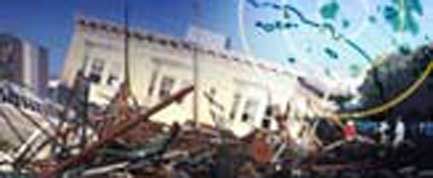Sumatran Quake Left 'Scar' on Earth's Gravity

The devastating 2004 Sumatran earthquake, which caused the worst tsunami in modern times, should have left a detectable scar on Earth's gravity field, European scientists said Monday.
A satellite planned for launch next year could detect the blemish, they said.
The magnitude 9.3 earthquake has already been said to have shortened the day by fractions of a second, shifted the North Pole by an inch, and made the planet less fat around the middle.
The new prediction comes from Roberto Sabadini and Giorgio Dalla Via at the University of Milan. The idea is fairly straightforward. The strength of Earth's gravity varies depending on the depth of a trench or height of a mountain, as well as the density of material. Even changing tides alter the gravity field.
The Dec. 26, 2004 quake lifted an 18-foot (6 meter) ledge along a 620-mile (1,000 kilometer) fault.
Gravity variations are measured using the geoid, which is similar to sea-level. The geoid is a hypothetical "surface" around the Earth at which the planet's gravitational pull is the same everywhere. Over dense areas, the geoid moves away from the real surface, and where gravity is less, the geoid moves closer to the real surface.
The Sumatran quake, the geoid moved as much as 0.7 inches (18 millimeters), the scientists predict.
Sign up for the Live Science daily newsletter now
Get the world’s most fascinating discoveries delivered straight to your inbox.
The variations in the gravity field are already studied from space with NASA's GRACE mission.
The European Space Agency's Gravity Field and Ocean Circulation Explorer (GOCE), planned to launch in 2006, is designed to be very sensitive to minor differences. As the spacecraft passes over regions of stronger and weaker gravitational pull, it will bob up and down.
A study of gravity scar data could in turn refine estimates of the physical rupture of a fault.
"Seismology is good for detecting the slip of earthquake faults and the location of the epicenter, geoid monitoring can determine how much mass is actually being moved around," Sabadini said.
Uplink Your Views











